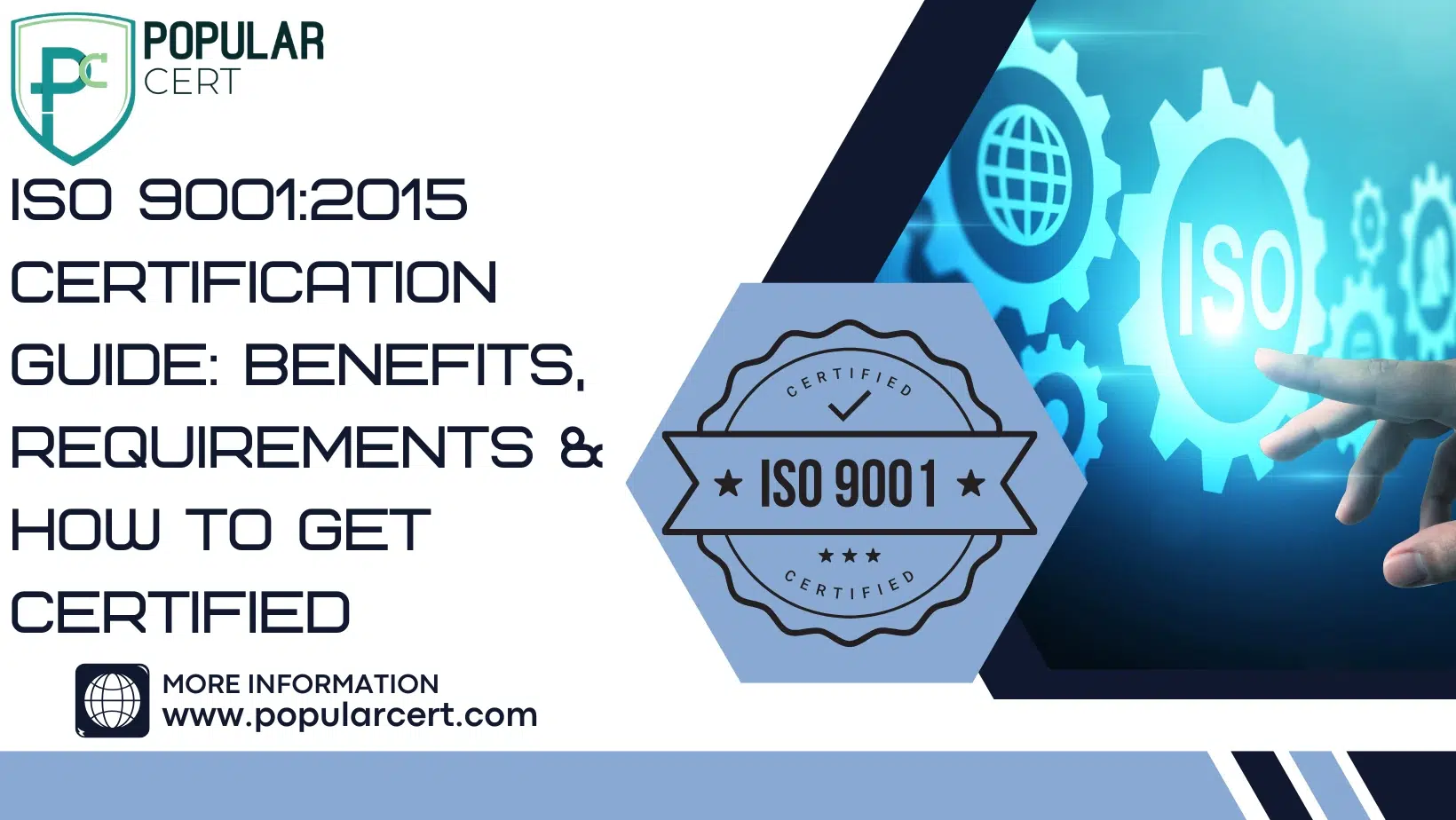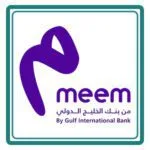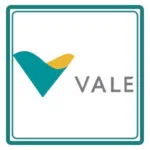ISO 9001:2015 Certification Guide: Benefits, Requirements & How to Get Certified

Introduction
Today’s marketplace is fiercely competitive and increasingly focused on quality, making ISO 9001:2015 certification in Saudi Arabia the worldwide standard for any organization eager to prove its ability to deliver quality and achieve operational excellence. It doesn’t matter if you run a boutique startup or a global corporation; adopting this internationally acknowledged Quality Management System can significantly boost customer trust, streamline your internal workflows, and unlock fresh market possibilities.
In this post, we’ll explain what ISO 9001:2015 is, outline its primary advantages, detail the certification requisites, and show how Popularcert can support you at every stage of the certification journey.
What Is ISO 9001:2015 and Why It Matters
ISO 9001:2015 is the most recent update to the ISO 9001 standard on Quality Management Systems, issued by the International Organization for Standardization (ISO). The standard lays out a systematic framework that enables organizations to consistently meet customer, regulatory, and other compliance requirements while fostering continuous operational improvement.
Major Updates in the 2015 Edition:
- A system-wide, risk-based thinking approach that encourages proactive management of uncertainties
- A stronger requirement for visible, active leadership and commitment
- An alignment with the Annex SL high-level structure, simplifying integration with other ISO standards such as ISO 14001 and ISO 45001
- A concentrated focus on the organization’s context and the expectations of relevant stakeholders
Whatever your sector—manufacturing, healthcare, logistics, education, IT—ISO 9001:2015 charts a reliable route to elevated quality and sustainable growth.
Key Benefits of ISO 9001:2015 Certification
Securing ISO 9001:2015 certification goes beyond ticking a box; it launches a meaningful change. Here are the main benefits you’ll see once this quality management system is in place:
1. Better Product and Service Quality
Standardizing workflows and leaning on data help you slash defects, cut down rework, and lower complaint rates. Quality becomes built in, not inspected in.
2. Heightened Customer Satisfaction
You’ll routinely meet and often surpass customer expectations. Structured feedback loops allow you to pinpoint and fix issues more quickly, delivering reliable value every time.
3. Gains in Efficiency and Cost Reduction
ISO 9001:2015 spots bottlenecks and waste. Sharper resource allocation and leaner workflows lead to higher productivity and lower overhead, boosting your bottom line.
4. Stronger Market Position and Access
Being certified elevates your reputation and opens doors: government contracts, corporate tenders, and global trade compliance all become more attainable.
5. Richer Employee Engagement and Accountability
Defined roles, clear documentation, and visible leadership create a quality-first mindset that runs from the top floor to the shop floor.
ISO 9001:2015 Requirements and Clauses
ISO 9001:2015 is structured into ten clauses and follows the Annex SL format, ensuring that the same logical framework applies across all ISO standards.
Key Clauses to Keep in Mind:
Clause 4: Context of the Organization. Identify the context in which your organization operates, paying attention to both internal dynamics and external conditions.
Clause 5: Leadership. Senior leaders must visibly commit to the quality management system and steer its adoption across the organization.
Clause 6: Planning. Shift to risk-based thinking, define measurable quality objectives, and prepare for any future changes.
Clause 7: Support. Secure the necessary resources, invest in training, maintain clear communication, and establish procedures for document control.
Clause 8: Operation. Plan and manage processes for both production and service delivery to consistently meet established quality criteria.
Clause 9: Performance Evaluation. Collect data to monitor and assess how well the quality management system is performing.
Clause 10: Improvement. Foster a culture of ongoing improvement and implement corrective actions whenever non-conformities arise.
ISO 9001:2015 Implementation Steps
Types Of Certification
- ISO Certification
- ISO 9001 Certification
- ISO 14001 Certification
- ISO 45001 Certification
- ISO 22000 Certification
- ISO 27001 Certification
- ISO 17025 Certification
- ISO 13485 Certification
- ISO 20000-1 Certification
- ISO 22301 Certification
- ISO 50001 Certification
- ISO 37001 Certification
- IATF 16949 Certification
- ISO 29001 Certification
- ISO 31000 Certification
- ISO 20121 Certification
- ISO 10002 Certification
- ISO 41001 Certification
Get Free Consultation
Our Clients


















At Popularcert, we make the path to certification clearer. Here’s how we guide you step by step:
Step 1: Gap Analysis.
Review your existing operations against the ISO 9001:2015 criteria. This scan highlights gaps and lays out a clear, actionable path to compliance.
Step 2: Planning and Resource Allocation.
Assemble a quality team, delegate specific roles, and distribute the needed resources. Create a timeline that is achievable and make sure all departments understand their responsibilities.
Step 3: Document Creation and QMS Design
Prepare the key documents: a Quality Manual, Standard Operating Procedures, detailed Work Instructions, and essential records. Popularcert works alongside you to design documentation that fits seamlessly with your existing workflows.
Step 4: Training and Engagement
Educate your personnel on the ISO 9001:2015 standard and their specific responsibilities within the QMS. Create a culture where everyone actively participates, fostering a sense of ownership and clarity on their roles.
Step 5: Internal Audit and Non-Conformity Management
Carry out systematic internal audits to gauge your level of preparedness. For any non-conformities identified, perform a root cause analysis and establish detailed corrective action plans to eliminate the issues.
Step 6: Certification Audit
Select a well-regarded and accredited certification body. The certification process consists of:
Stage 1: A thorough review of documentation and an evaluation of your readiness.
Stage 2: An on-site audit to confirm the practical effectiveness of your QMS.
Once you successfully meet all the requirements, you will be awarded the ISO 9001:2015 certificate.
ISO 9001:2015 Certification Maintenance and Surveillance Audits
Earning the certificate marks the start of your quality journey. To keep it:
- Regularly conduct internal audits to verify ongoing compliance.
- Continuously review and refine your processes using real performance data.
- Stay prepared for the annual or biannual surveillance audits arranged by your certification body.
Popularcert continues to offer support, helping you to refine and elevate your QMS well beyond the moment of certification.
Common Challenges and How to Overcome Them
Starting a Quality Management System can feel like a tall order. Below are the most frequent roadblocks we see—and how Popularcert clears the way:
- Change Aversion
What we do: Our consultants lead tailored workshops to secure executive support and involve the entire team.
- Documentation Gaps
What we do: We supply tailored templates and mentor your staff on effective document control.
- Resource Constraints
What we do: We integrate QMS tasks with your key business initiatives to prevent workflow interruptions.
With Popularcert by your side, ISO progress never stalls.
Why Choose Popularcert for ISO 9001:2015 Certification Assistance
Popularcert is your international ally for ISO certification. Our consultants combine sector knowledge with hands-on support and prep your team for audits.
Our ISO 9001 Service Portfolio:
- Gap Assessment & Roadmap Creation
- Policy and Document Creation
- In-person and Virtual Training
- Internal Audit Guidance
- Communication with Certification Bodies
- Ongoing Support after Certification
Across manufacturing, healthcare, IT, education, and logistics, we’ve guided organizations to ISO 9001:2015 certification without a hitch. Our purpose is to help you cultivate quality-first cultures and secure lasting success.
Contact Popularcert and kick off your ISO 9001 journey now.
Get Started With ISO 9001:2015 Certification Today
If your goals include delivering consistent quality, heightening customer satisfaction, and gaining a competitive edge, ISO 9001:2015 certification is the way to go. Partnering with Popularcert means you gain seasoned experts, a smooth transition, and a straightforward roadmap to certification.
Interested in launching your ISO 9001:2015 project?
Reach out to Popularcert now for a complimentary consultation and make your first move toward lasting excellence.
GET A FREE CONSULTATION NOW
FAQs
What distinguishes ISO 9001 from ISO 9001:2015?
ISO 9001 sets the global standard for Quality Management Systems. The 2015 version added elements such as risk-based thinking, an emphasis on understanding organizational context, and a heightened emphasis on leadership engagement.
Can a small business achieve ISO 9001:2015 certification?
Yes, ISO 9001 is designed to be flexible and can be tailored to fit organizations of any scale or industry, making it entirely achievable for small enterprises.
Is hiring a consultant necessary to implement ISO 9001?
Hiring a consultant isn’t a requirement, but partnering with a knowledgeable firm like Popularcert can streamline the implementation process and boost the likelihood of a successful first-time audit.
What occurs during the certification audit?
An accredited body conducts a two-stage audit: the first stage reviews documentation remotely, and the second stage is an on-site visit to check how the Quality Management System is put into practice. A favorable outcome results in the issuance of the certification.
For how long is the ISO 9001:2015 certification recognized?
The certification is valid for three years, during which it is maintained through annual surveillance audits, and a complete re-certification audit is required at the end of the three-year cycle.
